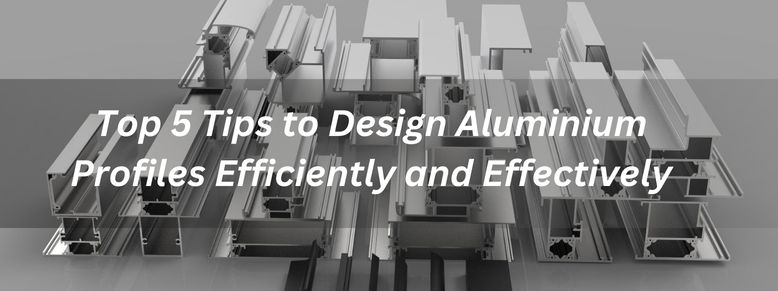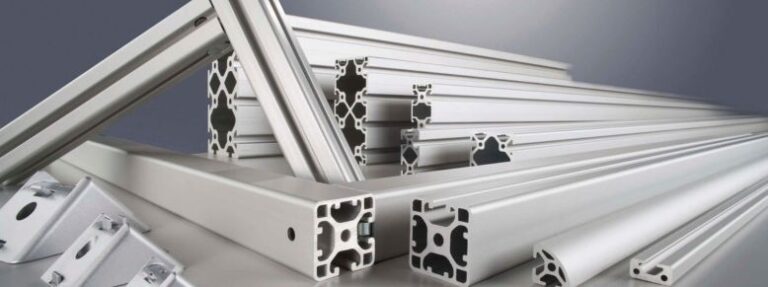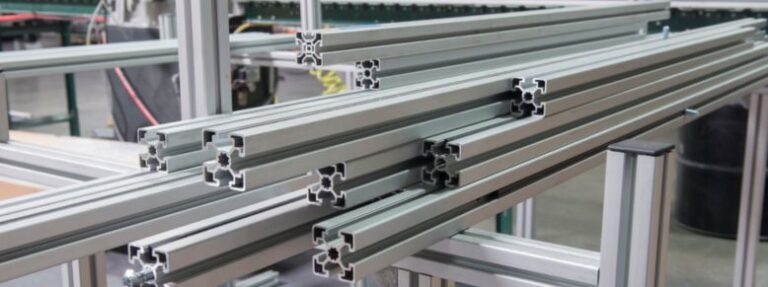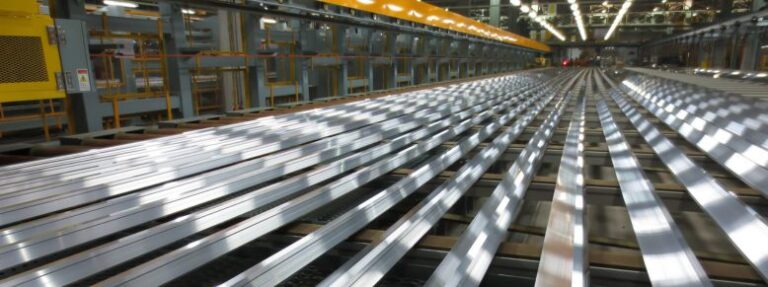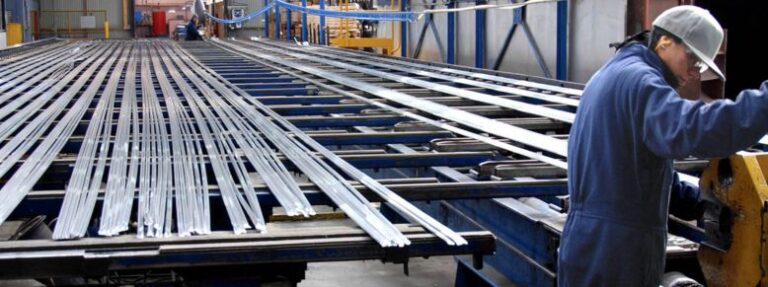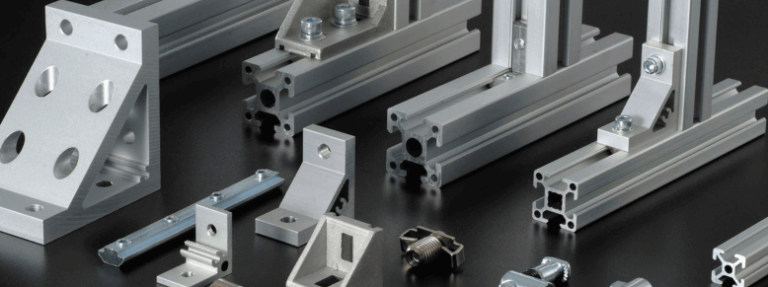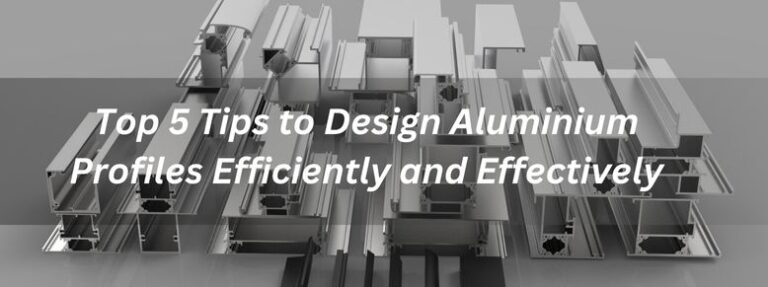Aluminium profiles are widely used in construction and manufacturing firms as they are a modern aspect of structural frameworks. Due to their versatility and durability, as well as their low cost, they are utilised in a number of applications. As more and more of these profiles enter the market, it becomes increasingly important for designers and engineers to know how to design an efficient profile. This article will discuss five best practices that you need to consider in your aluminium profile designs so that they are both functional and manufacturable.
- Understand the Extrusion Process
However, there are a few things that anyone wishing to delve into aluminium extrusion design should know before they start. This knowledge enables you to design products that will not only be functional but manufacturable as well. In the extrusion process, the aluminium is heated and forced through a die to produce the required profile cross-sectional shape. Some of the leading aluminium extrusion companies in India use modern tools and methodologies to create a variety of profiles. If you are to apply this process, you will be able to gain knowledge in the areas in which you might experience some obstacles in the future.
The knowledge of these basic elements will assist you in designing products that are functional and easy for the aluminium extrusion manufacturer to produce. Some of these may include the type of extrusion pressure, temperature control, and rate of cooling, as these play a key role in the final product. Finally, you should learn about some of the common extrusion defects, such as surface blistering, tearing, or dimensional inaccuracies, so that you may avoid them by designing proper profiles. This will give you a wholesome view of reality and make you design products on aluminium extrusion that can be fabricated by the manufacturer and how to meet the market expectations.
- Profiles are optimised for strength and weight
Among all the benefits of using aluminium profiles, it is vital to mention that the profiles contain a very high strength-to-weight ratio. To maximise the above characteristic, it is important to enhance the performance of your designs in terms of strength and weight. If the right proportion of strength to weight is achieved, then is it possible to develop profiles that are not only structurally efficient but also economical and energy-efficient in their context of use?
Consider utilising finite element analysis (FEA) software to simulate and optimise your designs before production. This can help identify areas of high stress or unnecessary material, allowing you to refine your profiles for maximum efficiency. Additionally, explore innovative design techniques like topology optimisation, which can help create organic, lightweight structures that maintain required strength properties. Remember that optimising for strength and weight often involves trade-offs, so work closely with your aluminium extrusion manufacturer to find the best compromise for your specific application needs.
- Consider Assembly and Integration
When designing aluminium profiles, it’s crucial to think beyond the extrusion process and consider how the profiles will be assembled and integrated into the final product or structure. By considering assembly and integration early in the design process, you can create profiles that are not only easy to manufacture but also simple to work with in various applications. This approach can save time and costs during the production and assembly stages.
Incorporate features that facilitate easy alignment and connection, such as interlocking edges or alignment pins. Design profiles with standardised dimensions and connection points to enhance modularity and flexibility in assembly. Consider the tools and methods that will be used during assembly and ensure your designs accommodate these processes. Additionally, think about potential future modifications or expansions and design your profiles to allow for easy upgrades or additions. By addressing these aspects in your initial design, you can create aluminium profiles that are not only functional but also user-friendly and adaptable to changing needs.
- Prioritise functionality and aesthetics
While the structural integrity of aluminium profiles is paramount, it’s equally important to consider their aesthetic appeal and functionality in the final application. By balancing functionality and aesthetics, you can create aluminium profiles that not only perform well but also enhance the overall appearance of the final product or structure. This approach can give you a competitive edge, especially when working with top aluminium extrusion companies in India known for their high-quality outputs.
Explore various surface finishing options, such as anodising, powder coating, or brushing, to enhance both the appearance and durability of your profiles. Consider incorporating subtle design elements that add visual interest without compromising functionality, such as small grooves or embossed patterns. Think about how your profiles will interact with light, as this can significantly impact their visual appeal in the final application. Additionally, design profiles that can easily integrate with other materials like glass, wood, or plastics to create visually striking and versatile end products.
- Collaborate with Your Manufacturer
One of the most valuable tips for designing efficient and effective aluminium profiles is to establish a strong collaborative relationship with your aluminium extrusion manufacturer. Their expertise and experience can provide invaluable insights throughout the design process. By fostering a collaborative relationship, you can tap into the wealth of knowledge and experience that top aluminium extrusion companies in India possess. This partnership can lead to more innovative, cost-effective and higher-quality aluminium profile designs.
Engage with your manufacturer early in the design process to benefit from their practical insights. Discuss your design goals, constraints, and any specific challenges you foresee. Be open to their suggestions for design modifications that could improve manufacturability or reduce costs. Consider organising regular design review sessions to ensure ongoing communication and alignment. Additionally, take advantage of your manufacturer’s knowledge about the latest extrusion technologies and materials, as this can help you stay at the forefront of aluminium profile design and innovation.
Conclusion
Designing aluminium profiles efficiently and effectively requires a combination of technical knowledge, creativity, and collaboration. By following these top five tips—understanding the extrusion process, optimising for strength and weight, considering assembly and integration, prioritising functionality and aesthetics, and collaborating with your manufacturer—you can create aluminium profiles that excel in both form and function.

